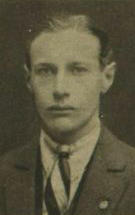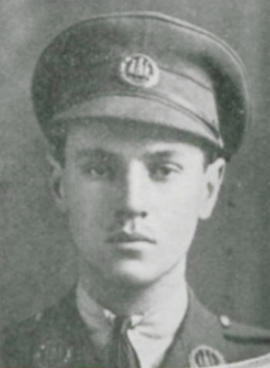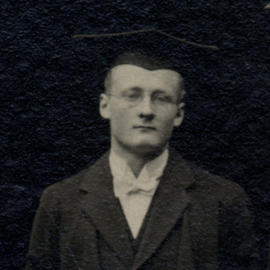Cumberland, Bentinck Howard, son of Walter Bertie Cumberland, GPO engineer, of Hendon, and Edith Howard, d. of Edmund Rawles of Hampstead; b. 6 Sept. 1917; adm. Apr. 1931 (R); left July 1936; The Loyal Regt 1940-3 (Capt.); killed in action (N. Africa) 30 Apr. 1943.
Bentinck Howard “Benty” Cumberland was born at Hampstead, London on the 6th of September 1917 the only son of Walter Bertie Cumberland, an engineer for the General Post Office, and Edith Howard (nee Rawles) Cumberland of 26, Shirehall Lane, Hendon in Middlesex. He was christened at St Mark’s Church, Marylebone on the 20th of October 1917. He was educated at Westminster School where he was up Rigaud’s from April 1931 to July 1936. He was a member of the 1st Rowing VIII in 1935 and 1936 where he rowed at No. 6. On leaving school he was articled to a firm of chartered accountants. He was elected as a member of the London Rowing Club in 1936.
He attended the 163rd Officer Cadet Training Unit (Artists Rifles) before being commissioned as a 2nd Lieutenant in The Loyal Regiment (North Lancashire) on the 3rd of August 1940 where he was later appointed as Battalion Transport Officer.
On the 29th of April 1943 the 1st Battalion, The Loyal Regiment was near Djebel Rhaouas in Tunisia where they had been involved in heavy fighting the previous day and were preparing to renew their attack. At 6am that morning 14 enemy tanks passed through the Gabgab gap towards the Battalion but soon came under British artillery fire and withdrew at 8am. Later than morning B Company was ordered to join C Company to reinforce 117 Metre Hill where enemy tanks had been seen. At 1.30pm 20 enemy tanks managed to infiltrate a gap in the British positions and established themselves on a nearby ridge where they dominated the approaches to 117 Metre Hill. As soon as this move had been completed a further 20 enemy tanks, supported by infantry, advanced through the Gabgab Gap and headed towards The Loyals’ positions on 117 Metre Hill. C Company called down artillery fire on the enemy force but this did not deter them and they continued to advance. At 2.30pm, tanks of the 145th Royal Tank Regiment began moving forward to attack the enemy tanks but they lost six of their number in a short space of time and so they took up static positions some two miles from 117 Metre Hill where they fired in support of the infantry but this was largely ineffective.
The German force closed and overran the The Loyals’ Support Company on the western side of the hill, and destroyed most of the Battalion’s transport. The Battalion had also lost all of its anti tank guns. Having suffered very heavy casualties, the survivors formed into small groups on the perimeter of their position while the German tanks dug in where they were and continued firing on the British positions for the rest of the day. Just before dawn, rations were brought up to the forward British troops and it was at this time that Bentinck Cumberland was killed by mortar fire.
At dawn on the 30th of April 1943, the Germans began withdrawing through the Gabgab Gap and new anti tank guns were brought forward to defend the gap should they return.
He is commemorated on the war memorial at the London Rowing Club.
He is buried at Massicault War Cemetery Plot V, Row M Grave 3.


